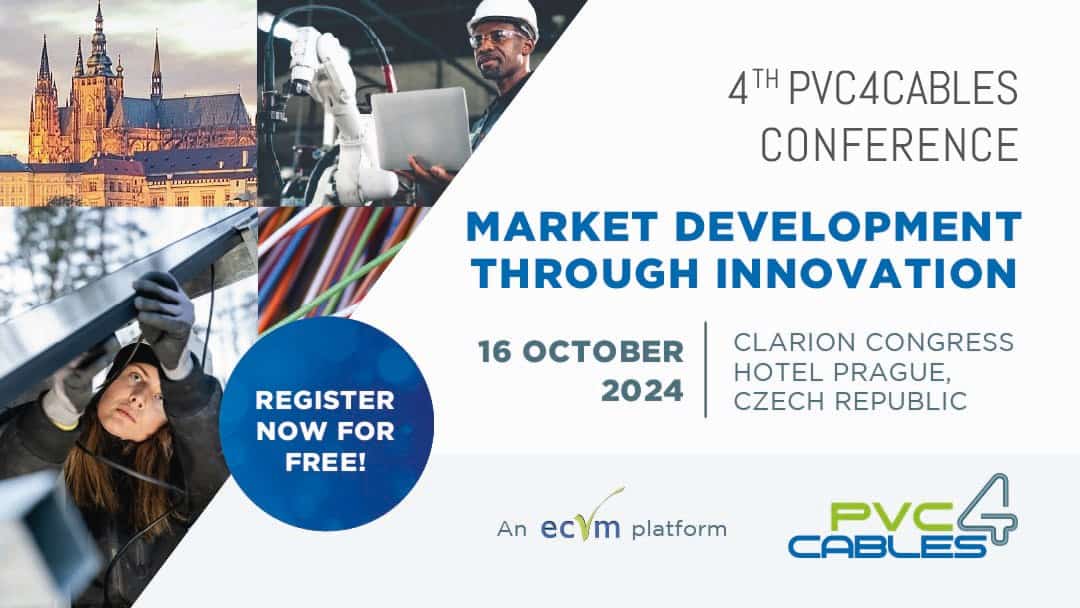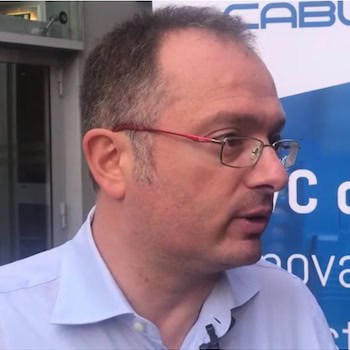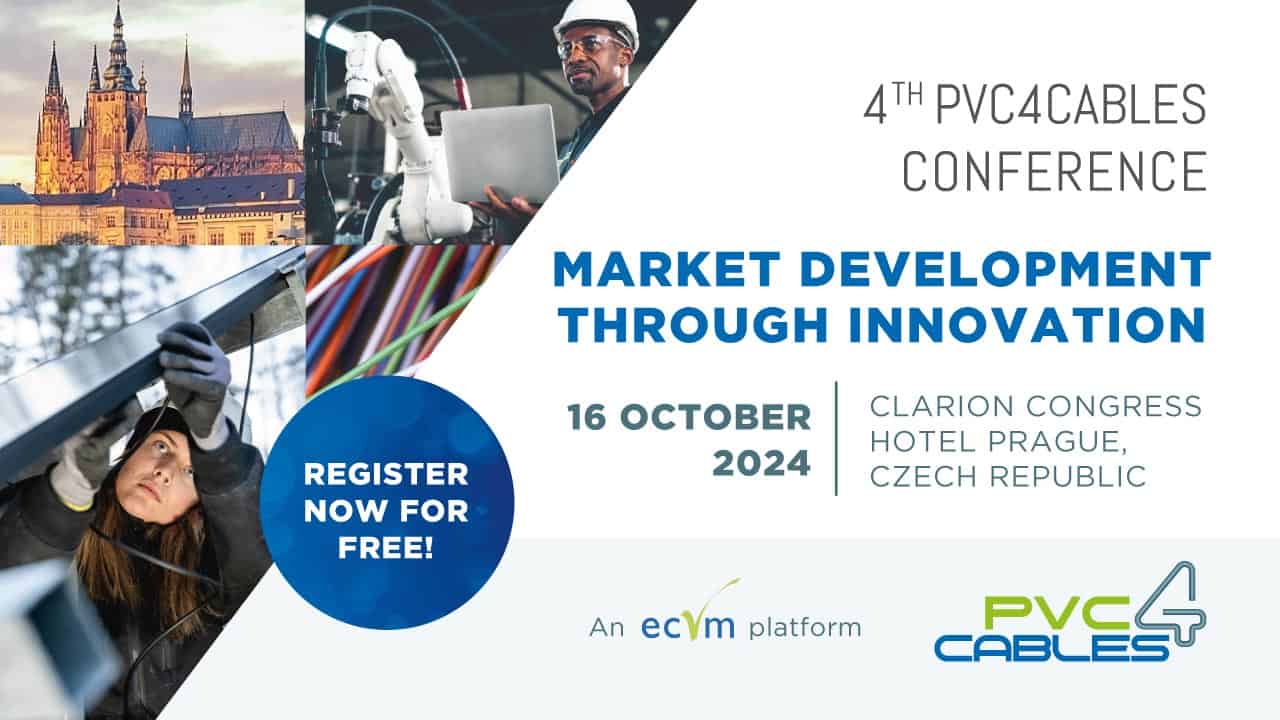
Market Development Through Innovation
The next edition of the ECVM Value Chain Platform Conferences will take place in Prague, Czech Republic. Over the course of two days, participants will have the opportunity to engage in the 4th PVC4Cables Conference and the 3rd PVC4Pipes Conference.
Addressing the common theme Market Development Through Innovation both conferences are open to all actors of the PVC cable and PVC pipe industries. They aim to present and discuss trends and opportunities in both sectors, with a particular focus on sustainability and innovation.
Programme headlines
The one-day PVC4Cables event of 16 October will focus on the following themes:
- PVC cables market trends in 2024 and beyond
- European regulations impacting PVC cables
- PVC cables standards in Europe and other regions
- Innovation and circularity along the PVC cables value chain
- Sustainability certifications for PVC cables
- International regions roundtable
PVC4Cables and PVC4Pipes are looking forward to welcoming you in Prague, Czech Republic, at the Clarion Congress Hotel, on 16 and 17 October 2024.
Registration is free of charge!
Discover the speakers and abstracts – more to come!

A Solution for PVC Pipe Waste Legacy Additives Extraction
Eric Romers, Head of Project Circle, Sustainability Business, INEOS Inovyn
Abstract
At INEOS Inovyn, our mission is to make all PVC waste fully recyclable, with the ambitious target of having our first industrial unit operational by 2030. To advance this goal, we have launched two pilot plants in Jemeppe-sur-Sambre, Belgium, home to our main R&D center.
These pilot plants build on the industrial experience gained from Vinyloop™ technology, which was in use in Ferrara (I) from 2002 to 2018, and are specifically designed to enhance PVC dissolution technology. This technology is crucial for recycling complex PVC waste, including composites and materials containing legacy additives. The pilot plants are currently validating lab test results, confirming the successful extraction of stabilizers and plasticizers while ensuring compliance with REACH regulations.

Key Growth Markets and Emerging Trends in 2024 and Beyond for the Cable Industry
Prof Maurizio Bragagni Esq OBE, CEO, Tratos Ltd
Abstract
The cable industry is currently experiencing stable growth, which is expected to continue over the next 5-10 years. This growth is being driven by several key markets and trends.
Power Cable Market is expected to grow significantly due to the confluence of factors such as urbanization, the expansion of electricity grids, the rise of renewable energy, infrastructure modernization, technological advancements, and increased investment in development projects. As the global demand for reliable and efficient power distribution continues to rise, the power cable market is well-positioned for robust growth in the coming years.
Telecommunications and Data Infrastructure are undergoing significant changes due to the rise of 5G networks and the IoT. These technologies are driving a strong demand for cables that can support higher bandwidth, faster data transmission speeds, and greater reliability. The cable industry is responding with innovation, developing advanced solutions that meet the needs of these rapidly evolving sectors. As these technologies continue to grow and mature, the demand for high-performance cables is expected to increase, making this an exciting and dynamic area of growth within the broader telecommunications market.
Emerging Markets: The surge in infrastructure investment in emerging markets is creating a significant and sustained demand for cables across various sectors, including construction, utilities, telecommunications, and renewable energy. As these economies continue to grow and develop, the need for reliable and efficient cabling solutions will only increase, providing vast opportunities for the cable industry. The ability of cable manufacturers to innovate and adapt to the unique challenges and demands of these markets will be key to capitalizing on this growth potential.

Toxicity of PVC Cable Compounds During Combustion Compared to Halogen-Free Alternatives
Gianluca Sarti, R&D Manager, Reagens, on behalf of PVC4Cables
This presentation investigates the thermal decomposition and combustion behavior of several compounds used in electrical cables, specifically comparing PVC-based and halogen-free materials. The study aims to identify the primary substances emitted during these processes using Pyrolysis-Gas Chromatography/Mass Spectrometry (PY-GC-MS) in nitrogen and air and at two different temperatures, 500 °C, a typical pre-flashover temperature and 950 °C that is a post-flashover temperature.
Particular attention is given to the effluents released by different types of cable sheaths. Three categories of sheaths were analyzed: a standard PVC sheath (R16) found in the market, an innovative PVC-based R16 LSA (Low Smoke Acidity) sheath designed to reduce acidic emissions, and an HFFR (Halogen-Free Flame Retardant) sheath, referred to as M16.
These sheaths are applied in two types of Italian CPR (Construction Products Regulation) cables: FG16OR16, which uses the standard PVC compound, and FG16OM16, which employs the HFFR compound. Both cable types are designed for the same market segment but differ in material and costs. The analysis focuses on characterizing the nature and quantity of volatile organic compounds in pyrolysis and other effluents released in combustion, in order to better understand the potential environmental and safety implications of these materials.

